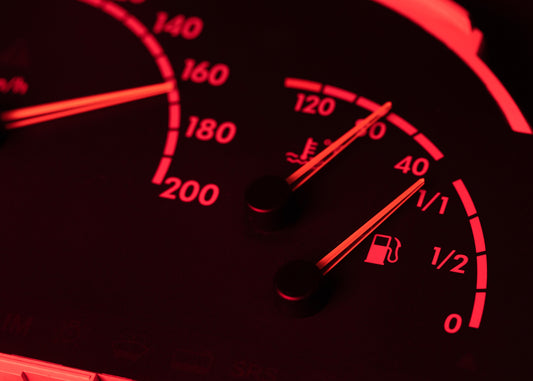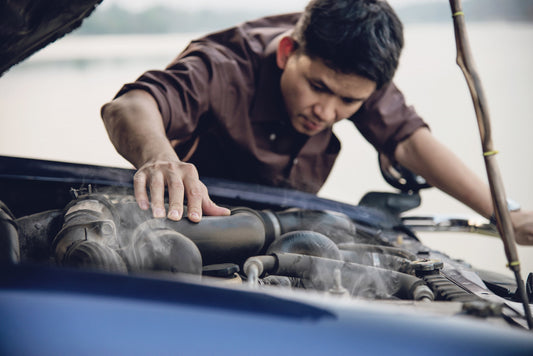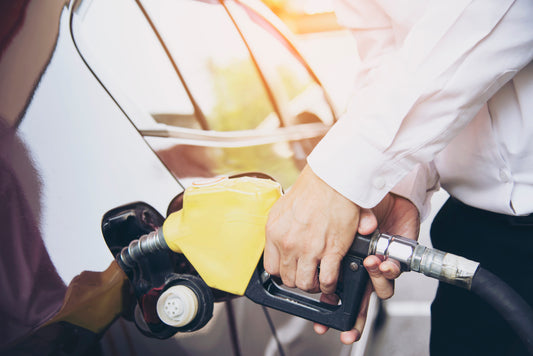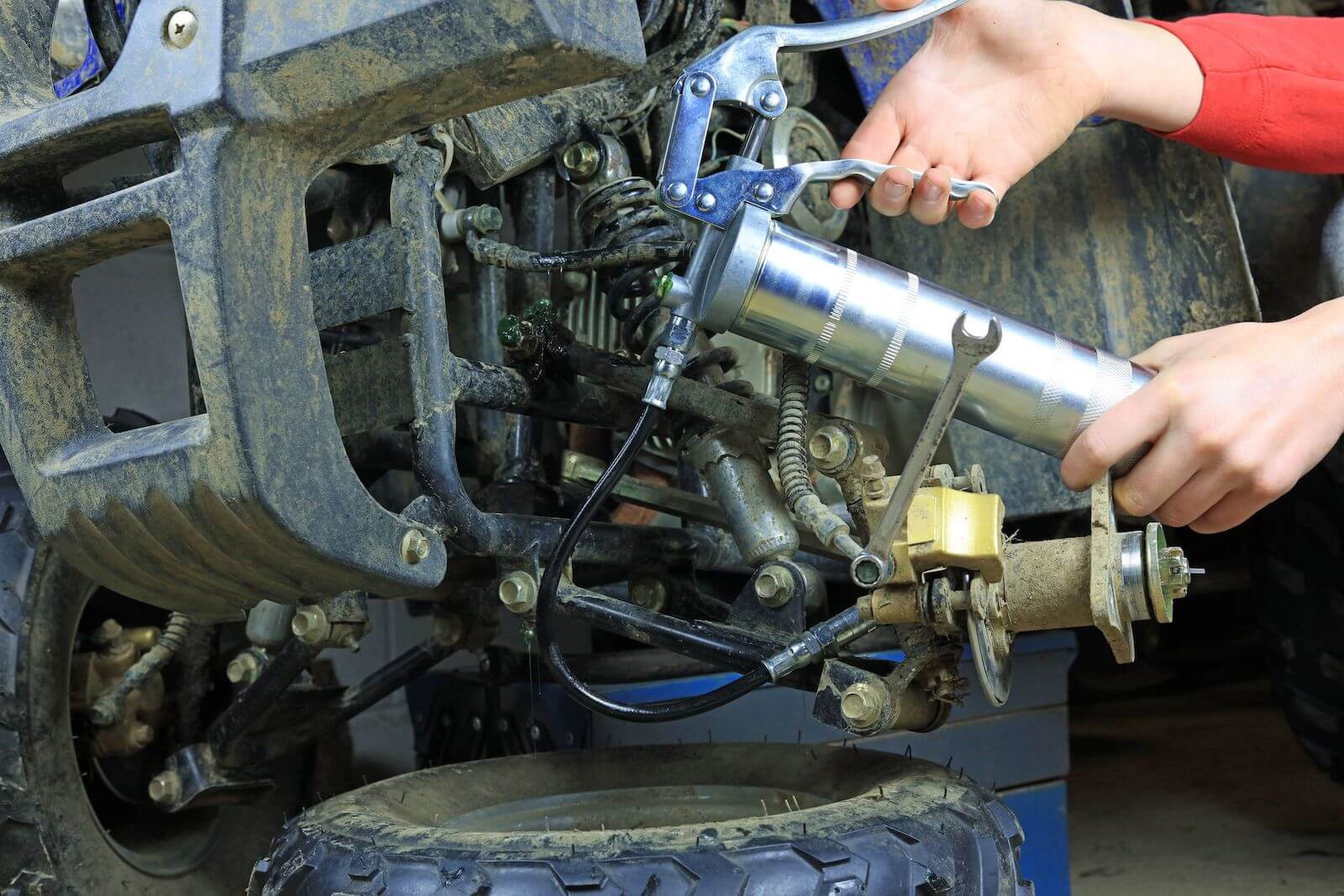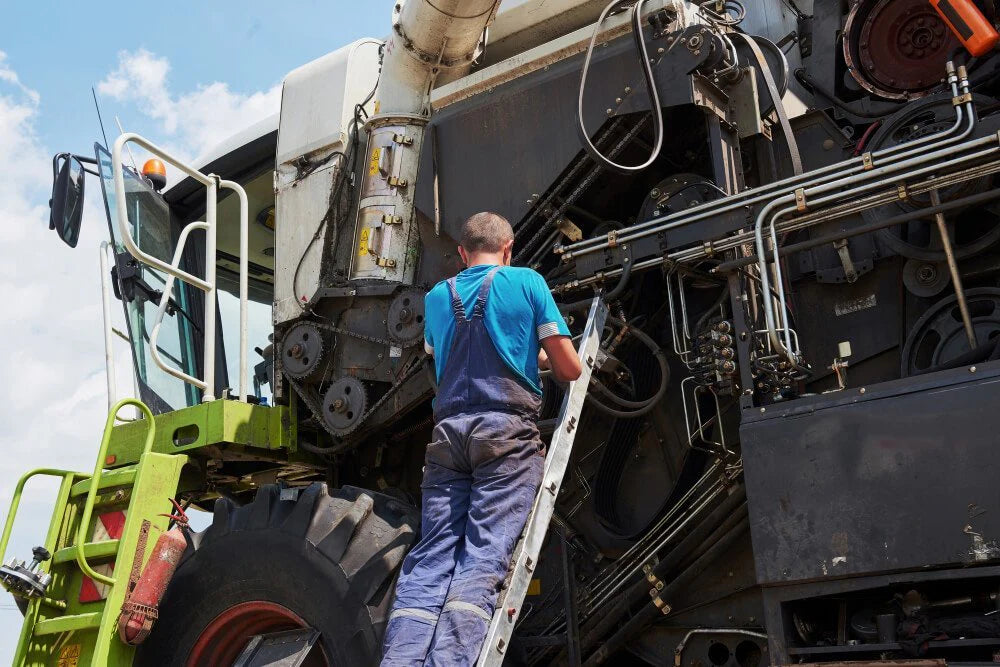When you bought your tractor, boat, or lawnmower you never thought about greasing it. Just admit it, it’s okay. Greasing is an afterthought, something you learn you must do. However, there is a problem, not a lot of resources exist to help educate a person about greasing. The owner’s manual for the machine will tell you general parameters but not specifics.
You can turn to YouTube and get 100 different answers from 50 different people, but you may find yourself more confused than when you started. Why can’t one source just give you all the correct answers?!? Well, that’s what we are going to do. All the answers are on the quick-hit list.
Here are the questions you have been asking yourself AND the correct answers:
What type of grease gun do I need?
Lube-Shuttle® Pistol grip grease gun or Lube-Shuttle® Electric Grease Gun. No mess, no leaks, no problems, no competition. These thread-in grease guns are simply the best on the market.
Traditional grease guns you can buy at a local box store are made to fail. They will leak, make a mess, and make you think you are doing something wrong, but here is the truth—Standard grease guns are flawed and are guaranteed to make a mess or only work half of the time. If you want a grease gun that works, get a Lube-Shuttle®.
What type of grease do I need?

Many applications call for multipurpose lithium greases, however, lithium is being replaced with calcium greases because they are higher performing and better priced. Better performance and a better price—How is that possible? Check out our previous blog on calcium greases to find out the answer.
An excellent multipurpose high-performance grease is AirTec G220EP. Perfect for lawnmowers, tractors, trailers, and campers.
How often do I need to grease?
Check your owner’s manual for exact numbers, however, a general rule is that bearings and bushings should be greased after every 10 hours of use. It is also recommended that you grease before and after storing the machine for winter or summer break.
How much grease goes into each zerk fitting?
To answer this question we must identify what is being greased.
Are you greasing a pin or bushing?
A pin or bushing is not a bearing and typically doesn’t have balls, rollers, or seals. Pins and bushings are typically found on loader arms, backhoes, excavators, bulldozers, and farm machinery. These specialized joints are designed to handle the extreme pressure and hold up better under pressure than bearings, but how much grease do they take?
When you grease a pin and bushing it is recommended that a small amount of grease comes out of the joint, indicating that enough new grease has entered the joint. Because there are no seals in a pin or bushing the grease acts as a seal and stops dirt and water from entering the joint.
Therefore, greasing until a small amount of new grease comes out of the joint helps push water and debris out and away from the joint.
Tip: Make sure you watch the pin or bushing from all sides, so you know the second a little grease starts coming out of the joint. If you are not watching, you could pump too much grease through the joints and that will only waste grease and create a mess. Paying attention is the key to staying clean and efficient.
Are you greasing a bearing?
Bearings are more complex than pins or bushings and contain balls or rods that roll and significantly reduce friction. To keep the moving parts of the bearing clean seals are installed on both sides of the bearing. These seals stop dirt and water from entering the bearing.
How do you know when you have enough grease in a bearing?
It is crucial not to over-grease a bearing and push the seals out of place, therefore, we cannot grease a bearing like we grease a bushing or pin. You should never see grease coming out of a bearing, if you do, you have over-greased.
We can’t stress this enough: DO NOT OVER GREASE BEARINGS. It will damage them and can cause them to fail sooner.

Ok, you got it—Don’t over-grease a bearing. So how do you tell when you have pumped in enough grease? It takes a little math (did your heart sink?). Don’t worry it’s easy.
For every inch in diameter of the shaft running through the center of the bearing you need about 3 pumps on a Lube-Shuttle® grease gun. So before you head out greasing, grab a ruler to measure the shaft in the bearings. Here’s a table to help:
| Shaft-size | Pumps of Grease |
| 1 | 3 |
| 2 | 6 |
| 3 | 9 |
| 4 | 12 |
| 5 | 15 |
If you are greasing a lot of bearings with a shaft over 2 inches in diameter, save your hand, and get a lube-shuttle® electric grease gun.
Why do bearings take so little grease?
Because bearings are sealed and have a lot of moving parts so only a little grease is needed. The seals stop contamination and prevent grease from leaking out, also, the moving parts in the bearing work around the entire surface. In a bearing, a little grease goes a long way.
Who is the best lubricant company?
It’s us. I mean come on; we wrote this super simple blog with all the answers to any greasing question. Plus, we have only top-quality products that feature the latest technology. Who else can top that?!?
Kidding aside, we hope after reading this you are confident when greasing and can relax knowing that you are greasing correctly.
Be safe, be smart, and have fun working with your new machine.


